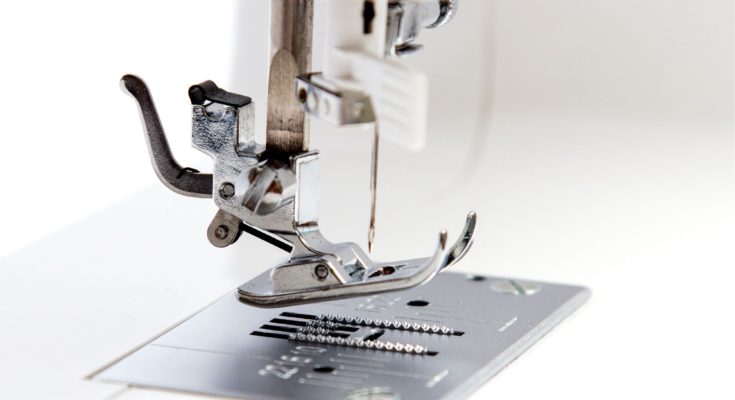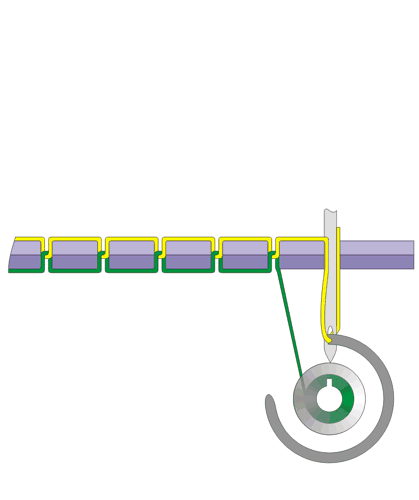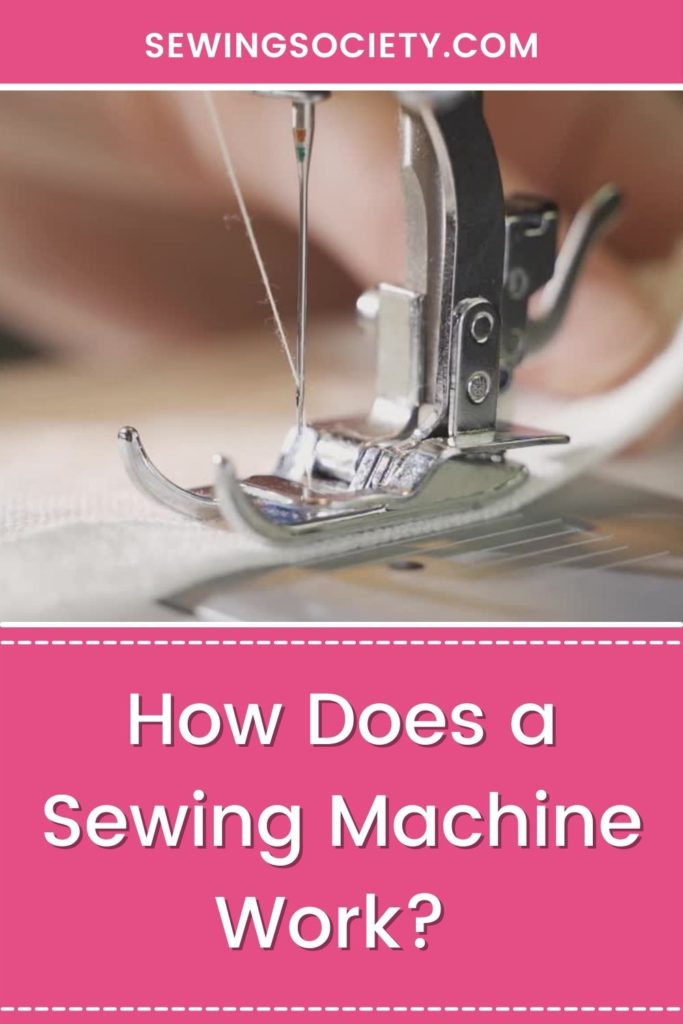Disclosure: This post may contain affiliate links. I earn a small commission when you click a link and make a purchase. Thanks for supporting SewingSociety.com!
The sewing machine was an awesome invention.
I don’t think you’ll argue with that…
Because of sewing machines, factories can produce clothing at record speeds. This enables people to buy more clothes than they could ever need!
Before the sewing machine was invented, people only rotated between a few outfits, at best. Everything was hand sewn and the process was time consuming and expensive. This was the norm until the early 1800s.
Also Read: Who Invented the Sewing Machine?
Sewing machines have seen a lot of new innovations over the years, but the basic operation is still the same. Let me show you how a sewing machine works.
Stitch Formation
Sewing machines form stitches by interlocking two threads — one thread in the bobbin and one thread in the needle. The needle mechanism moves up and down through a plate and the bobbin and shuttle mechanism rotates back and forth beneath the plate, creating loops. When the needle moves down, the thread it carries interlocks with the thread from the bobbin.
As you can see from the animation above, the bobbin thread is guided by a hook. When the upper thread and bottom thread tensions are balanced, the top and bottom threads lock between the layers of fabric, forming a line of stitches that look the same on the top and bottom of your fabric.
For zigzag and other decorative stitching, the needle swings left and right of center as it moves up and down. A stitch width adjuster determines the size of the stitches.
Fabric Feeding
In addition to a needle mechanism and shuttle mechanism, sewing machines have a fabric feeding mechanism. Tiny teeth, called ‘feed dogs,’ pull fabric through your sewing machine with the help of a presser foot.
The feed dogs resemble tiny tire treads. As they move up and down, they advance the fabric through the machine according to the selected stitch length setting. The presser foot is raised to place fabric under the needle, then lowered to hold the fabric against the feed dogs during stitching.
Also Read: Vintage Vs. Modern: Which Sewing Machine Is Best?
Nowadays, most sewing machines are powered by electricity. As you press your foot on the foot pedal, the sewing machine starts to form stitches. However, you can still find older models that use a foot treadle for power.
No matter which type of sewing machine you use, always consult the manual to ensure you are using it properly. Several specialty sewing machines exist with varying functions. In addition to a sewing machine, many people buy an embroidery machine, serger, and coverstitch machine.
Also Read: What to Look for in a Sewing Machine
Sewing machines are not complicated, but it’s common for people to encounter problems. If not set up properly, your thread can break, your stitches can look uneven, and all sorts of things can go wrong. I want to help everyone have a good experience with their sewing machine, which is why I created a sewing machine troubleshooting book. You can pick one up for just $2.99 on Amazon. It’s a great resource to keep near your sewing machine.
Share this post on Pinterest!







Very good stuff! I am looking for a owners manual for a Free – Westinghouse (Grasshopper) sewing machine! If you can are if you know some on that might have one please let me know! I would like a copy.
The model that I have was made around 1944 to 1946! The machine works great but it needs some fine tunning.